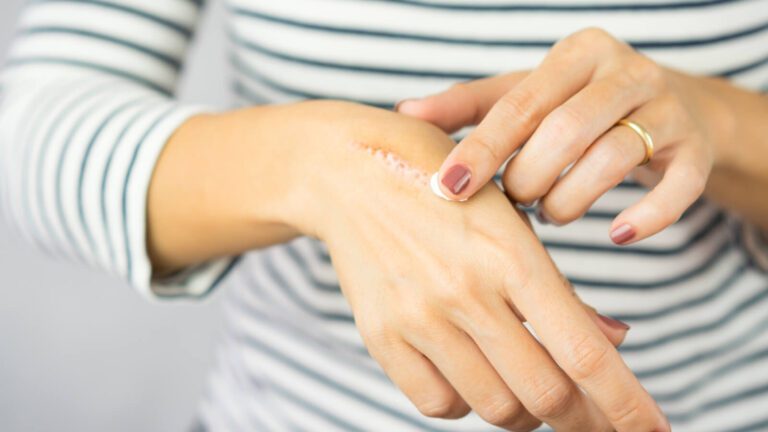MEDIA/
Preventing Scars Starts with Proper Wound Care

Everyone desires smooth and flawless skin, and when scars result from injuries, it can feel disappointing, especially if the scars are large or located in visible areas, potentially impacting confidence. How can we reduce the chances of scars forming from wounds?
Severe Scars Affect Mental and Physical Well-Being
When the body sustains damage from trauma, inflammation, or burns, it activates its self-repair mechanisms. Normally, connective tissue is generated to aid in wound healing. However, depending on the severity, cause, and location of the injury, some areas of skin may heal completely, while others may develop scars. Dr. Chan Sheung Hey Thomas, a dermatologist, notes that scars are more likely to form in areas with greater tension and frequent movement, such as the earlobes, back, chest, and shoulders. Connective tissue, which is essentially scar tissue, is made up of collagen and is a major component of the dermis.
Abnormal scars include hypertrophic scars or keloids, which can grow larger and spread, causing pain and itching. Additionally, due to contraction, scars near joints or in frequently moved areas, like the lips or eyelids, may result in functional impairments, hindering normal movement. Severe scars not only leave physical marks but can also have negative psychological effects, particularly if located in visible areas like the face, arms, or legs, impacting daily social interactions.
The Golden Treatment Period: Zero to Six Months Post-Healing
Scars can be categorized based on two factors: their cause (surgical scars, burns, infections, or acne scars) and their appearance (linear scars, raised scars, atrophic scars like those from chickenpox, pitted acne scars, red scars, pigmented scars, hypertrophic scars, and keloids). It is important to seek medical treatment for problematic scars as soon as possible.
Dr. Chan points out that, like other medical conditions, scars have an optimal treatment window. The golden period is within the first six months post-healing, as this is when collagen formation is most active and skin repair occurs most rapidly.
How to Care for Wounds to Prevent Scarring
Due to ultraviolet (UV) radiation from sunlight, which can cause redness and pigmentation changes in wounds, it is advisable to avoid sun exposure in the initial months. Proper sun protection should be used when going outdoors, and it is crucial to keep the wound clean to prevent infection. Notably, people of color are often at a higher risk of developing problematic scars compared to those with lighter skin, making timely treatment during the golden period especially important.
Silicone Gel: The First Choice for Scar Treatment
Currently, silicone gel is the preferred medication for treating problematic scars, as it does not soften the skin excessively or hinder movement, making it suitable for any body part. In addition to topical silicone gels, silicone gel sheets are available on the market; however, these products can sometimes irritate the wound and limit mobility, resulting in lower adherence to treatment.
Dr. Chan mentions that silicone gel has several advantages. It is easy to apply to joints and facial skin, is transparent and discreet, and once dried, provides semi-occlusive and breathable properties, allowing for the application of sunscreen or cosmetics over it. Additionally, applying silicone gel can help reduce inflammation and minimize variations in the wound. Generally, new scars should be treated with silicone gel for three to six months, while older scars may require at least a year of treatment.


